
The Lamanites are one of the four peoples described as having settled in the ancient Americas in the Book of Mormon, a sacred text of the Latter Day Saint movement. The Lamanites also play a role in the prophecies and revelations of the Doctrine and Covenants, another sacred text in the Latter Day Saint movement.
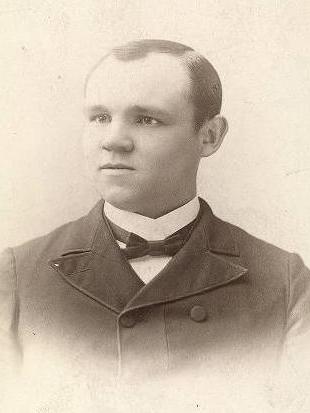
James Edward Talmage was an English chemist, geologist, and religious leader who served as a member of the Quorum of the Twelve Apostles of the Church of Jesus Christ of Latter-day Saints from 1911 until his death.

In the Book of Mormon, the Three Nephites are three Nephite disciples of Jesus who were blessed by Jesus to remain alive on the earth, engaged in his ministry and in their apostolic callings until his Second Coming. As described in Third Nephi chapter 28, this change occurred when they were caught up into heaven. Similar to Mormon beliefs about John the Apostle, the Three Nephites were granted immortality in order to carry out their ministering work on the earth. The account in the Book of Mormon reads that they ministered unto all the people in the surrounding lands, bringing many to the church by means of preaching and baptism.

Jesse Knight was an American mining magnate, one of relatively few Latter-day Saints in 19th century Western America to find major success in the field.

A limited geography model for the Book of Mormon is one of several proposals by Latter Day Saint scholars that the book's narrative was a historical record of people in a limited geographical region, rather than of the entire Western Hemisphere as believed by nearly all early and present Latter Day Saints.
Mormons have numerous significant instances of violence throughout their history as a religious group. In the early history of the United States, violence was used as a form of control. According to Mormon history, their members have faced persecution and forceful expulsion from where they have settled, such as being driven from Ohio to Missouri and from Missouri to Illinois during the lifetime of church founder Joseph Smith. Soon, those that followed one of Smith's successors Brigham Young settled in the Utah Territory and became the largest denomination of the Latter Day Saint movement, the LDS Church. Church history records that their migrations were accompanied by acts of violence that included massacres, home burnings, and pillaging.

Mormon folklore is a body of expressive culture unique to members of the Church of Jesus Christ of Latter-day Saints and other sects of Mormonism. Mormon folklore includes tales, oral history, popular beliefs, customs, music, jokes, and material culture traditions. In folklore studies, Mormons can be seen as a regional group, since the core group of Mormon settlers in Utah had a common religion and had to modify their surroundings for survival. This historical regional area includes Utah, Southeastern Idaho, parts of Wyoming and eastern Nevada, and a few towns in eastern Arizona, southern Alberta, northwestern New Mexico, southern Colorado, and northern Chihuahua, Mexico.
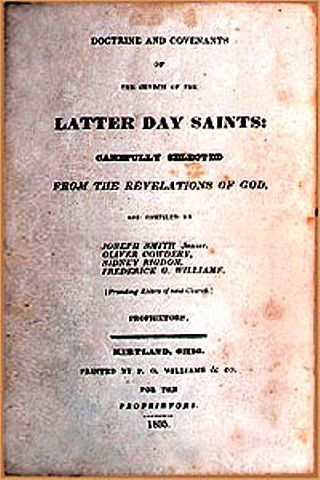
The One Mighty and Strong is the subject of an 1832 prophecy by Joseph Smith, the founder of the Latter Day Saint movement. The prophecy echoes and parallels the words and prophecies contained in Isaiah 28:2 and Isaiah 11:11; 2 Nephi 3:21-25. The One Mighty and Strong was said by Smith to be one who would "set in order the house of God" and arrange for the "inheritances of the [Latter Day] Saints." Since the prophecy was proclaimed, many Latter Day Saints have claimed to be or to have otherwise identified the One Mighty and Strong. Some schismatic Latter Day Saint sects have arisen as a result of such claims.
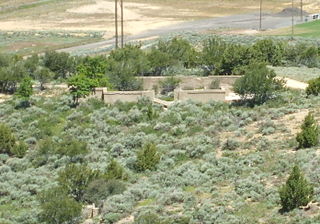
Knightsville is a ghost town located in the East Tintic Mountains on the northern slope of Godiva Mountain, approximately 2 miles (3.2 km) east of Eureka, in the northeastern corner of Juab County in central Utah, United States. A silver mining camp, Knightsville was established and operated as a company town by local mining entrepreneur Jesse Knight. The town was inhabited from 1896 until approximately 1940.
Winter Quarters is a ghost town in Carbon County, Utah, United States. Coal was discovered in the area in 1875, and later that year, the Pleasant Valley Coal Company began coal mining operations. A group of coal miners was delayed during an early winter storm in 1877, which led to the town's name of Winter Quarters. On May 1, 1900, an explosion in the Winter Quarters Number Four mine killed 200 miners. Despite the mine explosion, the coal mining operations remained active until 1922, when the opening of a new mine in Castle Gate caused many people to relocate there. By 1930, Winter Quarters was abandoned.
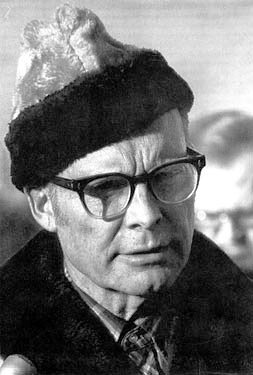
Ogden Wedlund Kraut was an American polygamist, author and publisher who became best known for his writings about Mormon fundamentalist topics. Kraut was an independent fundamentalist who never joined any fundamentalist group. He published his writings and other historical church writings through his Pioneer Press.
The Utah-Idaho Sugar Company was a large sugar beet processing company based in Utah. It was owned and controlled by the Church of Jesus Christ of Latter-day Saints and its leaders. It was notable for developing a valuable cash crop and processing facilities that was important to the economy of Utah and surrounding states. It was part of the Sugar Trust, and subject to antitrust investigations by the U.S. Department of Justice, the Federal Trade Commission, and the Hardwick Committee.

The White Horse Prophecy is the popular name of an influential but disputed version of a statement on the future of the Latter Day Saints and the United States. It was given by Edwin Rushton in about 1900, and supposedly made in 1843 by Joseph Smith, Jr., the founder of the Latter Day Saint movement.

The Knight Block is a historic building located on South University Avenue in downtown Provo, Utah, United States. It is listed on the National Register of Historic Places.
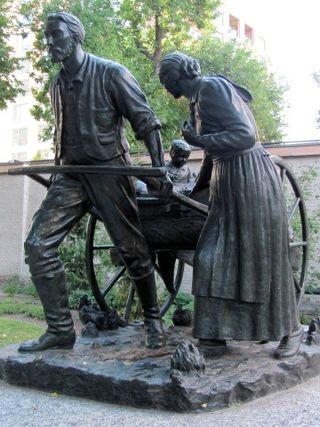
John Rowe Moyle was a Mormon pioneer and a settler of Alpine, Utah. He was a master stonemason for the Salt Lake Temple, and was the carver of the inscription "Holiness to the Lord" on the temple's east side.
In the Church of Jesus Christ of Latter-day Saints, marriage between a man and a woman is considered to be "ordained of God". Marriage is thought to consist of a covenant between the man, the woman, and God. The church teaches that in addition to civil marriage, which ends at death, a man and woman can enter into a celestial marriage, performed in a temple by priesthood authority, whereby the marriage and parent–child relationships resulting from the marriage will last forever in the afterlife.
The Carbon County Strikes took place in Carbon County, Utah from 1903–1904. The strikes primarily consisted of Slavic and Italian immigrant mine workers who partnered with the United Mine Workers of America strikes in Colorado to protest the dangerous working conditions of the Utah coal mines. The Carbon County strikes were considered the most important labor confrontation in the United States at the time. The Utah Fuel Company strongly opposed initiatives to unionize coal workers in Utah and were the primary opposition to the UMWA at the time. The Carbon County Strikes would ultimately fail in its attempt to unionize the coal workers of Utah simply because it "did not have enough support, either internally or externally, to win against a powerful and influential company that effectively played on radical, anti-foreign sentiments in defending its position" but it demonstrated a significant nationwide effort in strengthening unionization in the west.

John Hyrum Koyle was an American religious leader who was bishop in the Church of Jesus Christ of Latter-day Saints and is best known for his role in creating the Dream Mine in Salem, Utah. He claimed a series of prophetic dreams, including that the Dream Mine would produce precious metals to support the church during anticipated catastrophe before the Second Coming of Jesus, and was excommunicated from the church in 1948.
John Leo Hafen was an American photographer and artist and the first person to bring color photography to Utah. Attending school in Springville, Utah, and Salt Lake City, Hafen experimented with different art forms. He received the Utah Arts Council Award for Best Amateur Work in Photography in 1899. He also won an award at the Art Institute in 1907 and won a Special Merit award from Desert Magazine in 1940. He co-owned the Olsen and Hafen photographic gallery in Provo, Utah, and toured with photographer George Edward Anderson. In 1908, Hafen married Daisy Marie Nelson, who died in childbirth in 1908. One year later, Hafen married Ella Lowry and had five children with her. A member of the Church of Jesus Christ of Latter-day Saints, Hafen was excommunicated for his involvement with the West Tintic Branch, whose members were found guilty of practicing "wife sacrifice", a form of wife swapping which they considered to be religiously justified.












